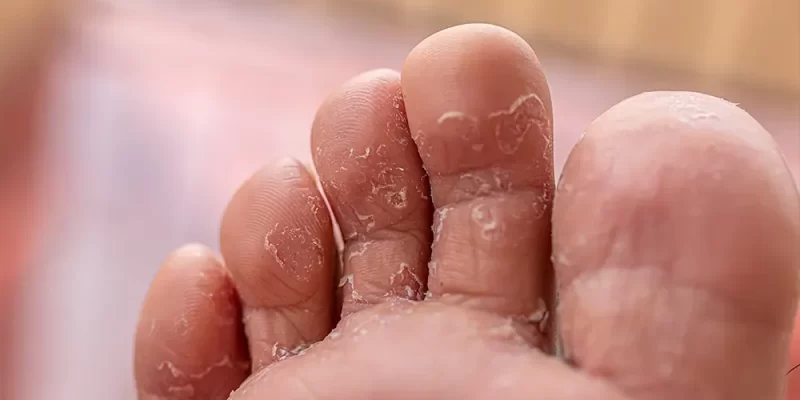Foot health is an important part of one’s overall well-being, particularly in Arizona’s arid climate. Yet, it is often overlooked. People regularly experience two prevalent foot conditions: dry feet and Athlete’s foot. These conditions, while separate, can occasionally be confused with one another due to similar symptoms. In this article, we will look into Athlete’s foot. To learn more, consult a professional for Podiatry in Tucson, AZ, today.
Understanding Athlete’s Foot.
Athlete’s foot is a common fungal ailment (caused by fungi). An athlete’s foot produces an itchy, stinging, and burning rash on the skin of one or both of your feet. Athlete’s foot is most commonly found between the toes, but it can also affect the tops of your feet, soles of your feet, and heels. Your skin may become scaly, cracked, or blistered. Sometimes, your feet smell awful.
Athlete’s foot is a kind of ringworm. An athlete’s foot is sometimes known as “tinea pedis.” “Tinea” is another word for ringworm, while “pedis” means foot or feet.
What Athlete’s Foot looks like
An athlete’s foot can damage the skin between your toes, bottoms, tops, edges, and heels. Your skin might seem inflamed (red, purple, gray, or white), scaly, or flaky.
Who is at risk of Athlete’s Foot?
Athlete’s foot affects everybody. However, it primarily affects men (including those designated male at birth) and individuals over the age of 60. You may have a higher risk of developing Athlete’s foot if:
- You have a weakened immune system.
- You have obesity.
- You have diabetes.
- You have wounds or tissue damage on your feet.
Athlete’s foot is prevalent. According to estimates, 3% to 15% of the population has an Athlete’s foot, and 70% will have an Athlete’s foot at some point in their life.
Is it dryness or Athlete’s Foot?
The symptoms of dry feet are mostly connected to the skin’s texture and moisture content. This includes rough, flaking, or peeling skin, particularly on the heels and soles. Patients may feel itching, redness, and irritation. In extreme situations, fractures or fissures might form, causing discomfort and bleeding.
Athlete’s foot causes a unique mix of symptoms, largely owing to a fungal infection. The most frequent symptom of an Athlete’s foot is a scaly, red rash that appears between the toes. Itching, stinging, and burning sensations are common. The skin may peel, and severe instances may result in ulcers or blisters. If not treated, this highly contagious infection can spread to other regions of the foot, nails, or even other body parts.
If you suspect that you have an Athlete’s Foot, consult a doctor immediately.








Comments